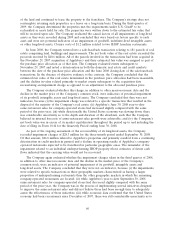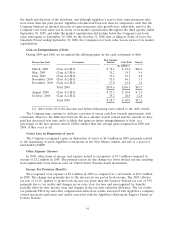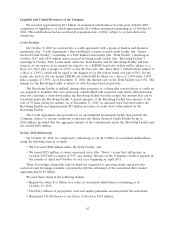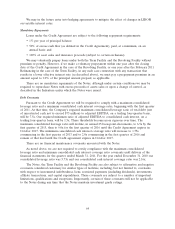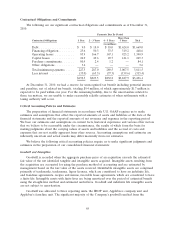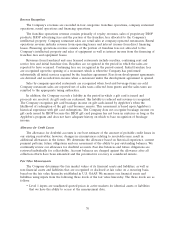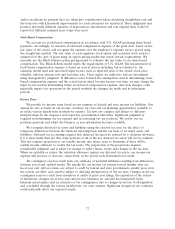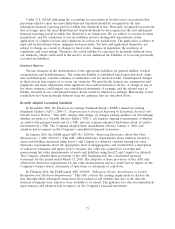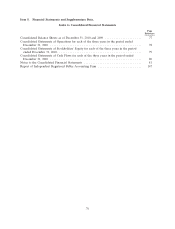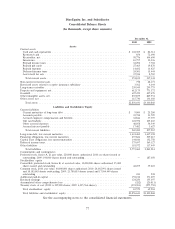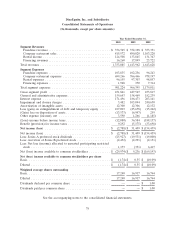IHOP 2010 Annual Report Download - page 86
Download and view the complete annual report
Please find page 86 of the 2010 IHOP annual report below. You can navigate through the pages in the report by either clicking on the pages listed below, or by using the keyword search tool below to find specific information within the annual report.Revenue Recognition
The Company’s revenues are recorded in four categories: franchise operations, company restaurant
operations, rental operations and financing operations.
The franchise operations revenue consists primarily of royalty revenues, sales of proprietary IHOP
products, IHOP advertising fees and the portion of the franchise fees allocated to the Company’s
intellectual property. Company restaurant sales are retail sales at company-operated restaurants. Rental
operations revenue includes revenue from operating leases and interest income from direct financing
leases. Financing operations revenue consists of the portion of franchise fees not allocated to the
Company’s intellectual property and sales of equipment as well as interest income from the financing of
franchise fees and equipment leases.
Revenues from franchised and area licensed restaurants include royalties, continuing rent and
service fees and initial franchise fees. Royalties are recognized in the period in which the sales are
reported to have occurred. Continuing fees are recognized in the period earned. Initial franchise fees
are recognized upon the opening of a restaurant, which is when the Company has performed
substantially all initial services required by the franchise agreement. Fees from development agreements
are deferred and recorded into income when a restaurant under the development agreement is opened.
Sales by company-operated restaurants are recognized when food and beverage items are sold.
Company restaurant sales are reported net of sales taxes collected from guests and the sales taxes are
remitted to the appropriate taxing authorities.
In addition, the Company records a liability in the period in which a gift card is issued and
proceeds are received. As gift cards are redeemed, this liability is reduced and revenue is recognized.
The Company recognizes gift card breakage income on gift cards issued by Applebee’s when the
likelihood of redemption of the gift card becomes remote. This assessment is based upon Applebee’s
historical experience with gift card redemptions. The Company does not recognize breakage income on
gift cards issued by IHOP because the IHOP gift card program has not been in existence as long as the
Applebee’s program and does not have adequate history on which to base recognition of breakage
income.
Allowance for Credit Losses
The allowance for doubtful accounts is our best estimate of the amount of probable credit losses in
our existing receivables; however, changes in circumstances relating to receivables may result in
additional allowances in the future. We determine the allowance based on historical experience, current
payment patterns, future obligations and our assessment of the ability to pay outstanding balances. We
continually review our allowance for doubtful accounts. Past due balances and future obligations are
reviewed individually for collectability. Account balances are charged against the allowance after all
collection efforts have been exhausted and the potential for recovery is considered remote.
Fair Value Measurements
The Company determines the fair market values of its financial assets and liabilities, as well as
non-financial assets and liabilities that are recognized or disclosed at fair value on a recurring basis,
based on the fair value hierarchy established in U.S. GAAP. We measure our financial assets and
liabilities using inputs from the following three levels of the fair value hierarchy. The three levels are as
follows:
• Level 1 inputs are unadjusted quoted prices in active markets for identical assets or liabilities
that we have the ability to access at the measurement date.
70


